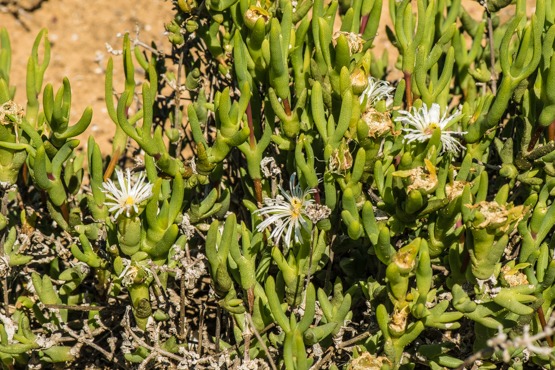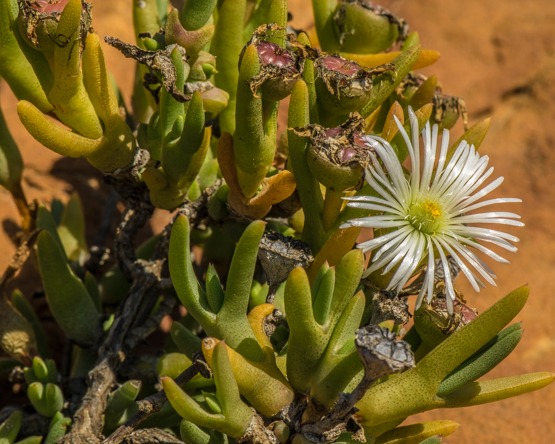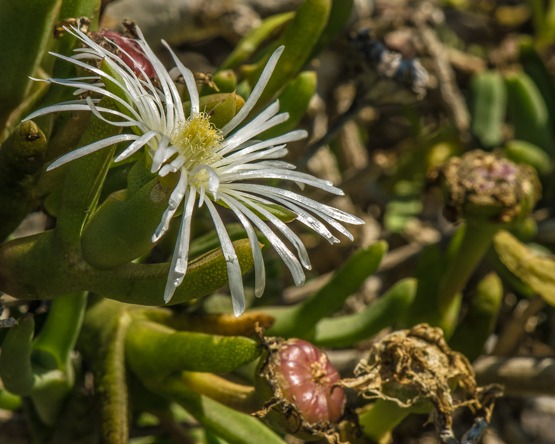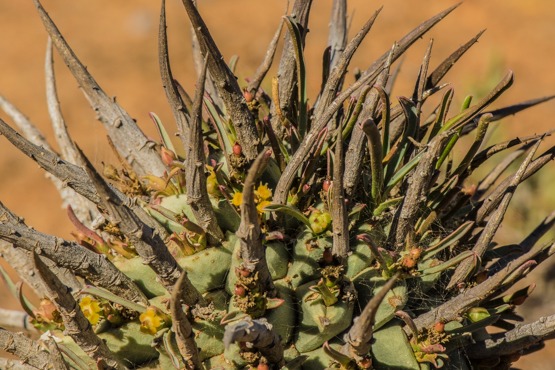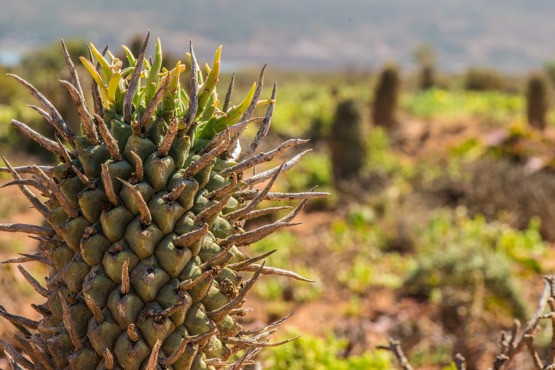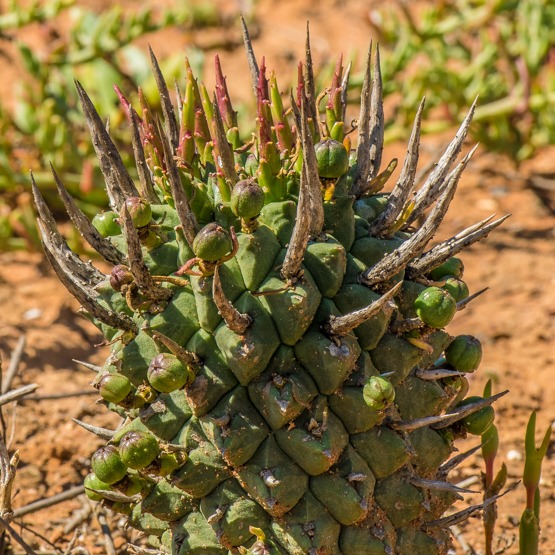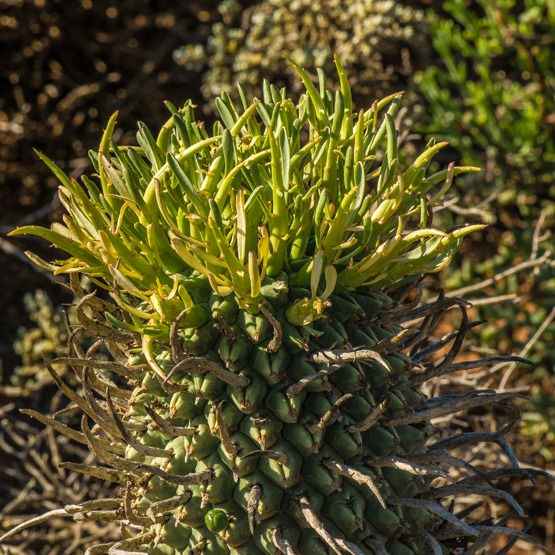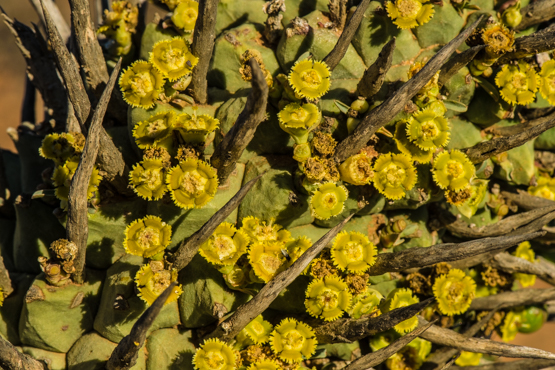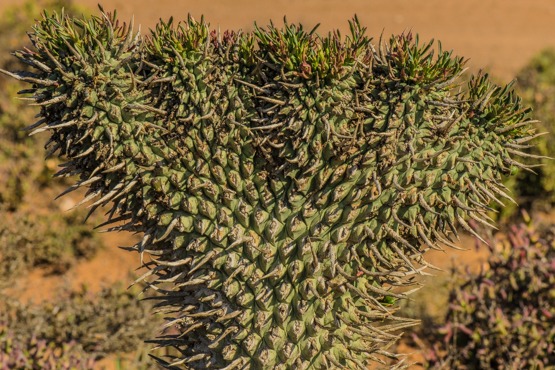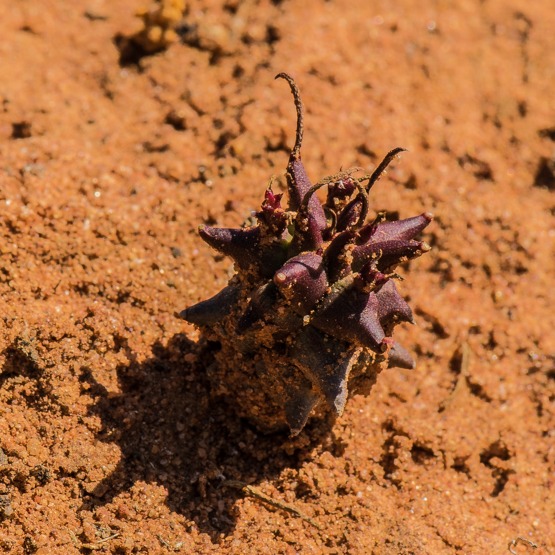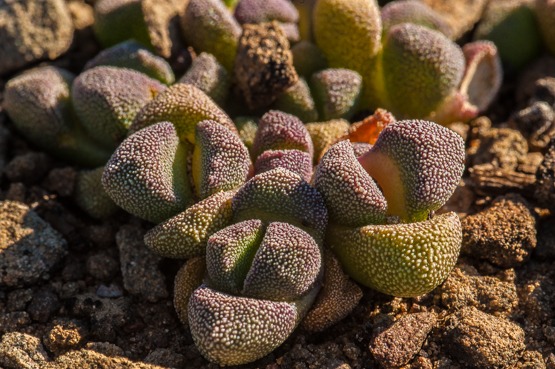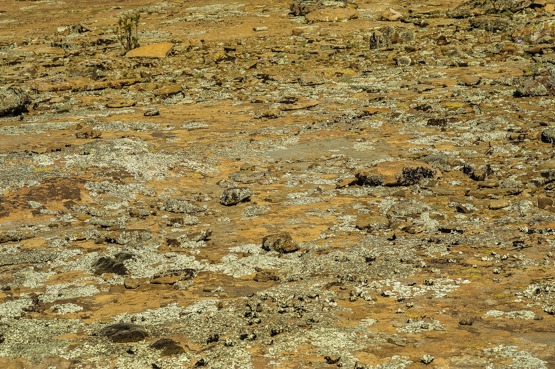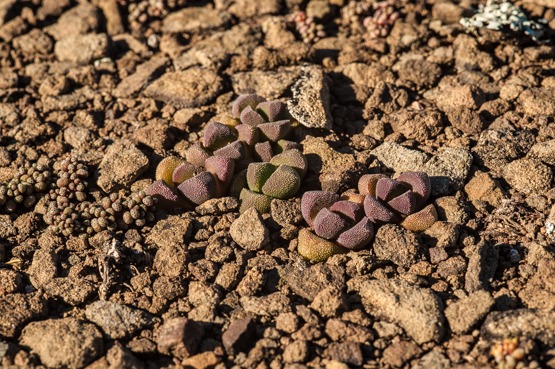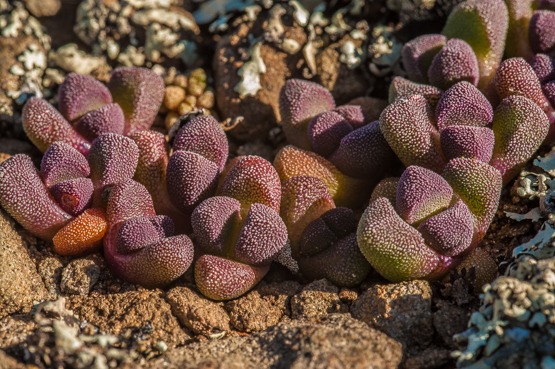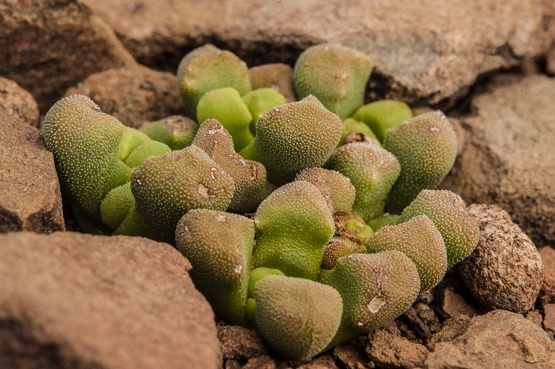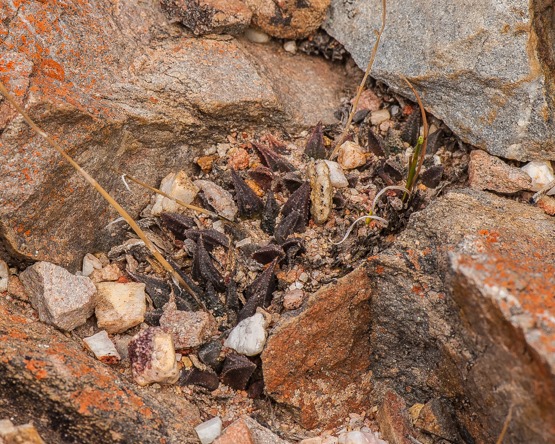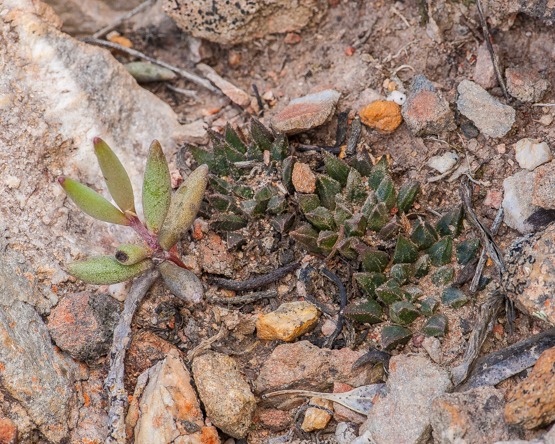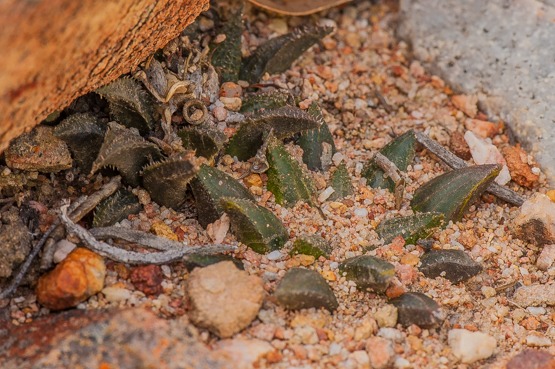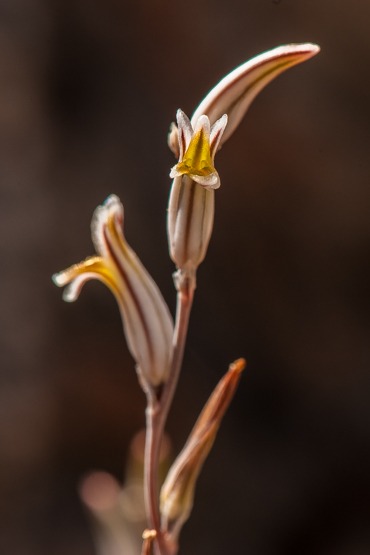There is only a single species in the genus Vanzijlia, occurring in sand along the west coast, from Saldanha to Hondeklipbay and inland towards Clanwilliam on loam.
The plants form small tangled shrubs, with branches creeping or growing upwards into other shrubs. They have dimorphic leaf pairs:
– a smaller, nearly completely fused pair which is oblong or spherical, with or without small free points to the leaves
– a larger pair in which the leaves are more or less cylindrical or semi-cylindrical and only fused at the base (often inflated there).
The pale pink to white flowers are solitary, 2.5 to 6 cm in diameter and appear in late autumn to winter (May-September). After pollination they develop into capsules with 9 or 10 compartments.
